Best Practice for (Automated) Battery Cell Testing with ELT3000
INFICON has recently released the ELT3000 battery leak detector for integrity testing of all lithium ion battery cells. This article summarizes the answers to typical customer questions regarding how to use the ELT3000 in automated testing systems.
Planning the leak testing process
Prior to designing the leak testing workstation, some general decisions need to be made:
1. Where in the battery cell manufacturing process should the testing take place?

Testing of battery cells can be done either right after filling and before formation and/or after formation. The benefit of a test before formation is that no leaky cells go into formation. This avoids any safety risk associated with formatting leaky cells, while at the same time saving the cost of formation for parts that will be scrapped afterwards. Testing after formation guarantees that no leaky cells are shipped, as leaks caused during formation or through handling will be detected. Leak testing after formation should be applied to all pouch cells as these do not have all final seals before formation. One seal of the pouch cell is only generated after degassing, so the final seal can only be verified after formation.

Pouch cell before (left) and after (right) formation, degassing and resealing. Only the seals indicated by the green dotted line can be tested for leaks. The seals indicated in red cannot be tested and do not form a final seal of the pouch.
2. How do I determine between testing of individual cells and batch testing?
Leak testing of battery cells can be done on each cell individually or in batches of several cells. Testing individual cells will yield the result for each cell directly, while batch testing will require identifying the leaky cell within a batch in a secondary testing step. But, batch testing typically offers higher throughput as material handling times are lower in that case. Additional time is required, however, to identify the leaky cell within the batch in case of NG test result.
The first pass yield of the battery sealing process determines whether testing of individual cells or batch testing is more efficient and also is the main factor in deciding on the optimum batch size. Batch size should be set so that a reasonable number of batches are expected to test leak-free and the increase in throughput outweighs the extra effort for identifying the leaky cell within the batch afterwards.
3. How do I design a leak testing station?
Once a batch size (1 = individual cell testing) has been set, the actual leak testing station may be designed. The actual design depends on the degree of process automation. The ELT3000 can be used in manual station, semi-automated stations, but also in fully automated production lines.
As in all leak detection processes, it is good practice to have a physical boundary between the filling process and the leak testing station so that the testing area is not contaminated by elevated levels of electrolyte solvent in the surrounding air. A simple enclosure with a passage equipped with a conveyor belt curtain will be sufficient to shield the testing station. Often testing stations that use robotic part handling need to be enclosed anyway for safety reasons.
For highest throughput, a customized chamber designed for the specific dimensions of the particular cells should be used. The total cycle time is made up from the total measurement time and the evacuation time. Chambers should be designed to achieve a minimum free volume after parts have been loaded. The lower the free volume in the testing chamber, the faster the evacuation time to the testing pressure of a few mbar. For large chambers, an optional external pump may also be used to speed up the pump down to achieve faster cycle times. The ELT3000 is prepared to also control an external pump.
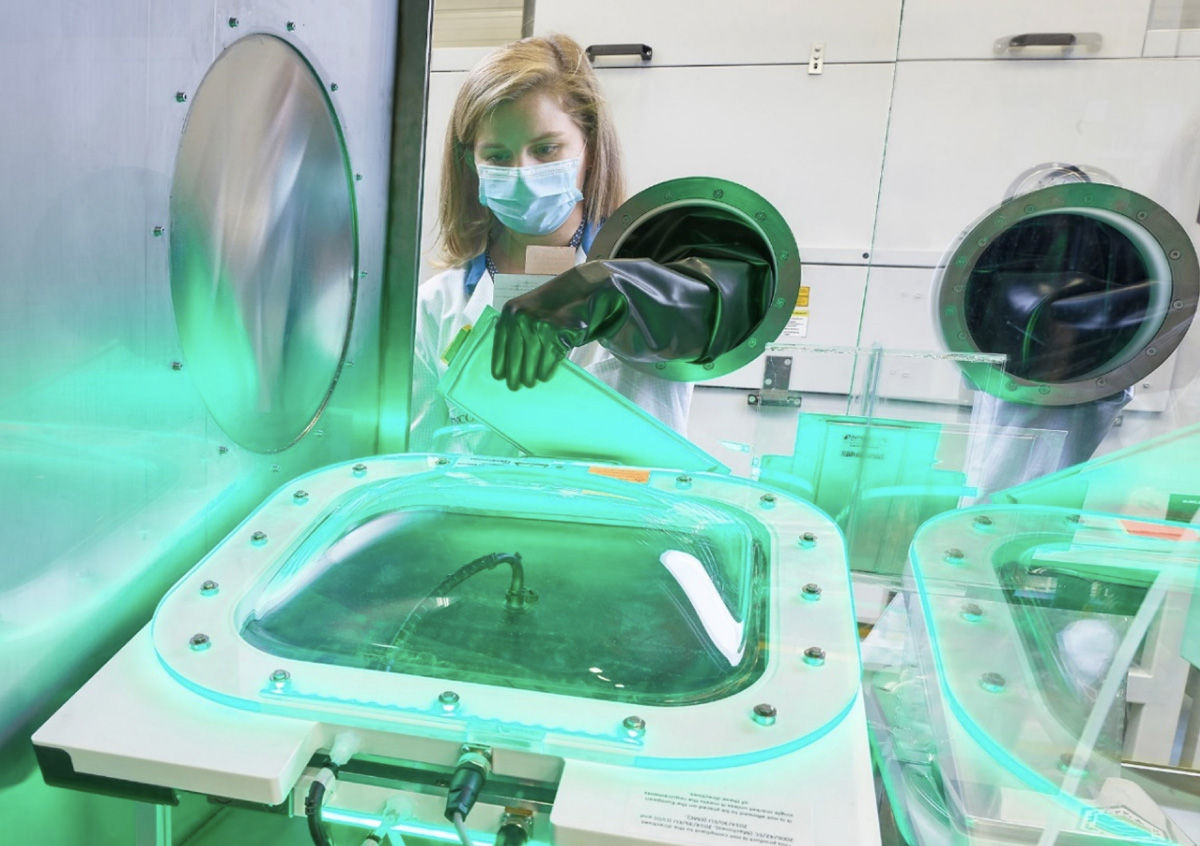
Manual testing station with the FTC3000 flexible chamber in a controlled environment
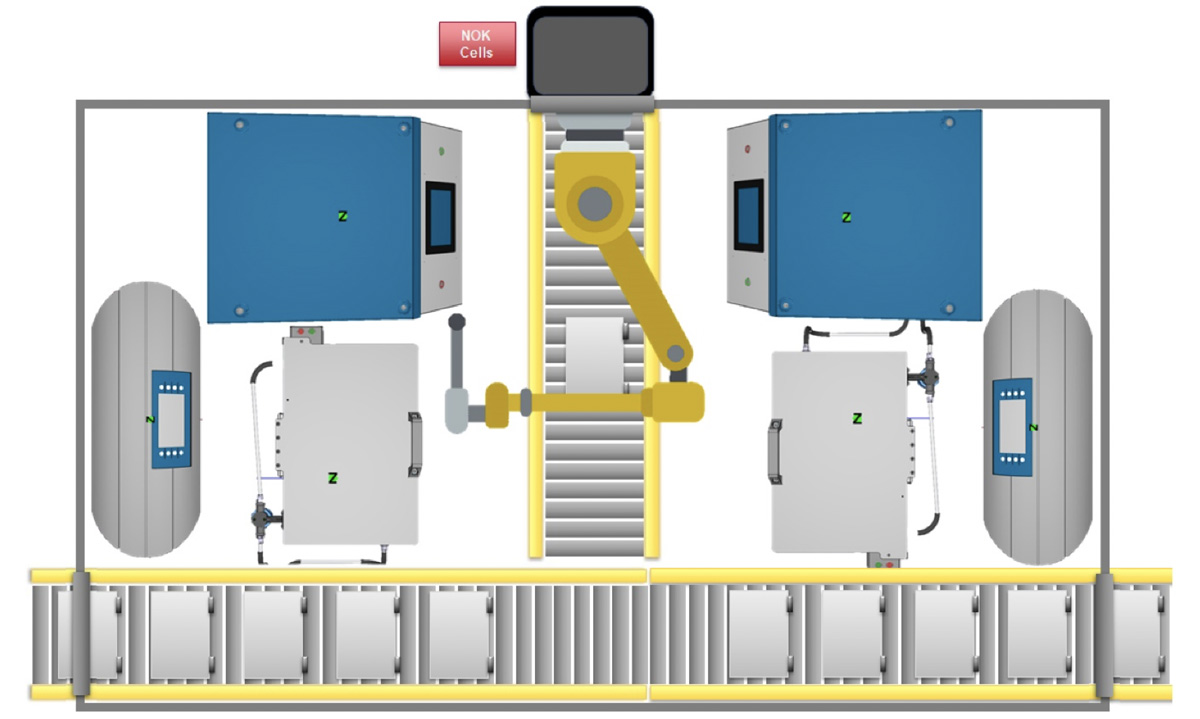
Layout of a fully automated testing line for prismatic cells with two test systems for high throughput
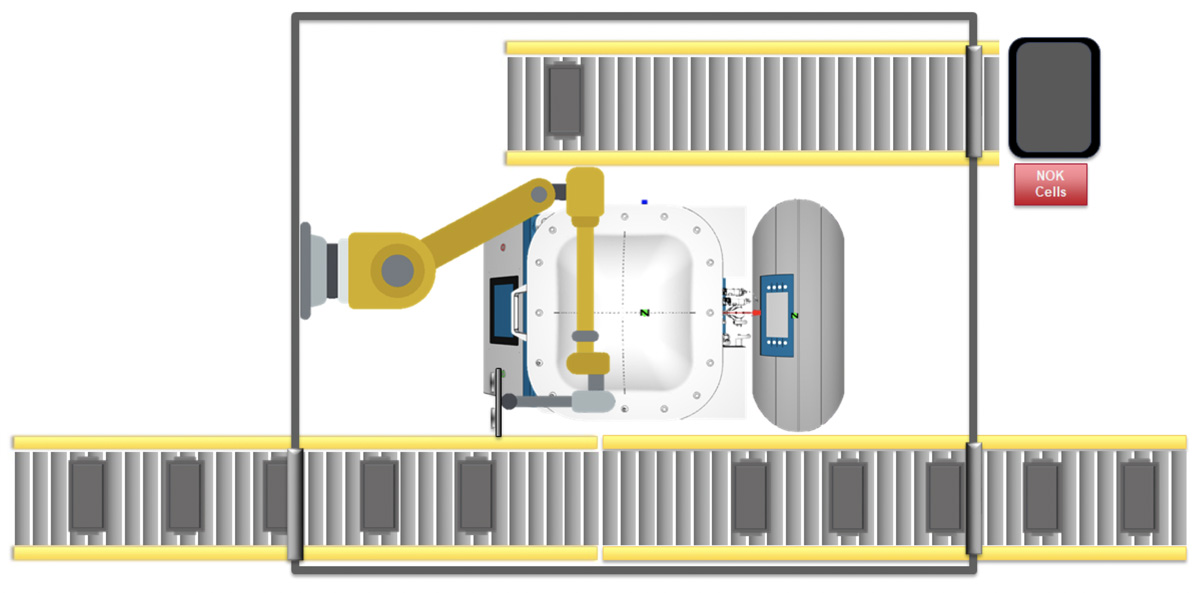
Example layout of testing station for pouch cells
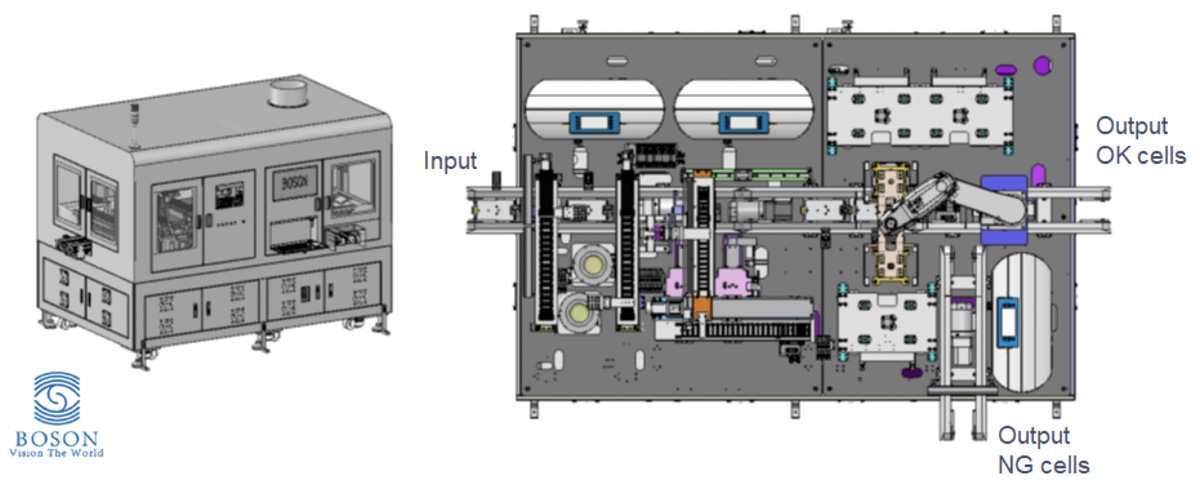
Example of an automated testing system for trays of coin cells with three ELT3000 systems.(Graphic: Courtesy of Suzhou Boson Smart Technology Ltd)
Part loading and unloading can be done by an operator for a fully manual station or through standard material handling technologies (like conveyors or robotic loading) for automated stations.
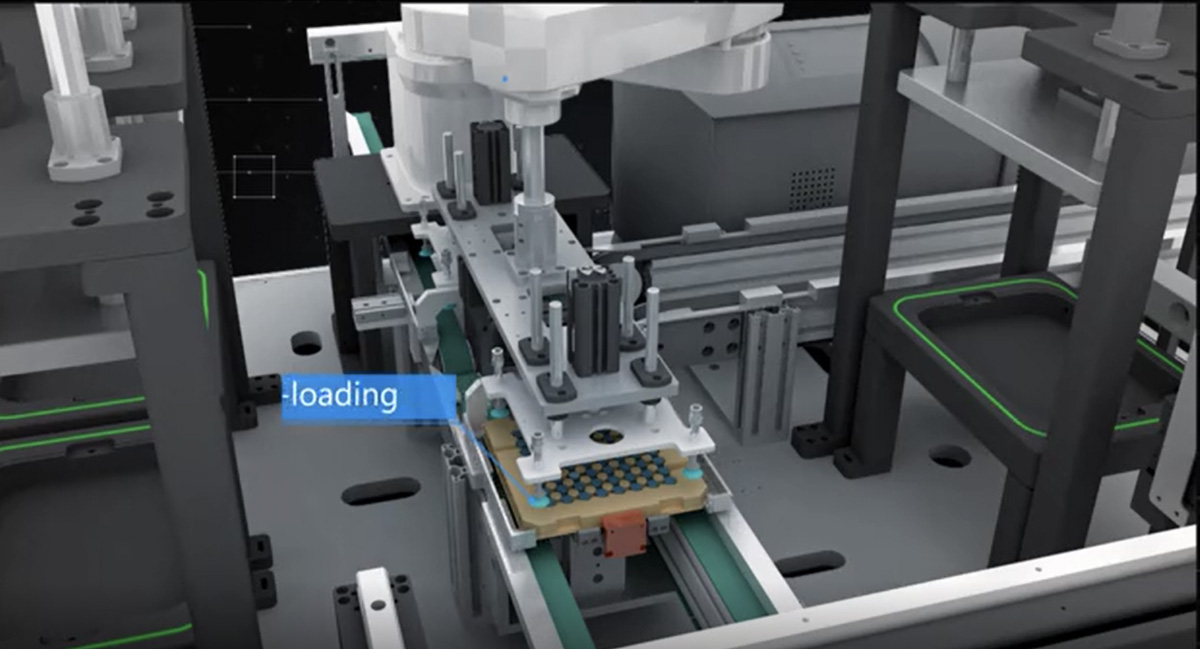
Loading of trays with coin cells inside automated testing system with three testing chambers, two on the left side and one of the right side (Graphic: Courtesy of Suzhou Boson Smart Technology Ltd)
ELT3000 offers several BUS interfaces for proper process control: ProfiBus, PROFINET, DeviceNet and Ethernet/IP. The INFICON chambers for ELT3000 are equipped with a proximity switch so that the leak testing process is started automatically on closing of the chamber lid. The leak testing process may also be started through an interface command. An optional bar code scanner can read-in the serial number of the cell to be tested. The measured leak rate and an ok/not ok signal will be sent by the ELT3000 at the end of the testing process and is stored with the serial number of the cell.
If you have a need for automated testing solutions for battery cells, please contact you nearest sales representative who will be happy to assist!
For more information on the ELT3000 leak detector, the testing method and how to implement it in your production, you may also watch our On-Demand Webinar "Leak Testing of Lithium-Ion Battery Cells"!
